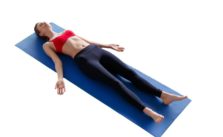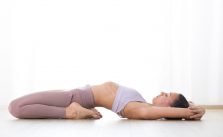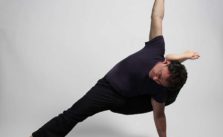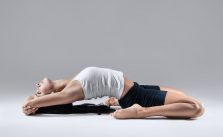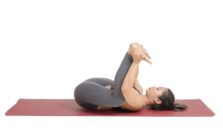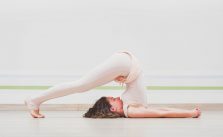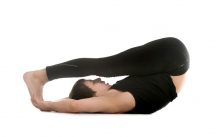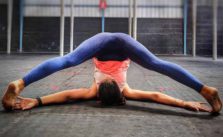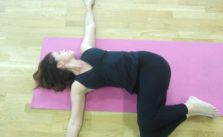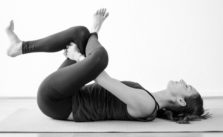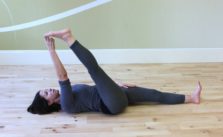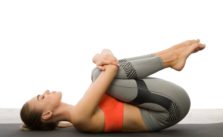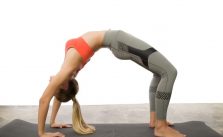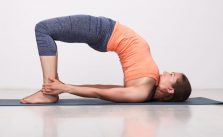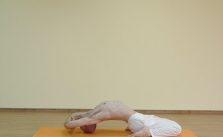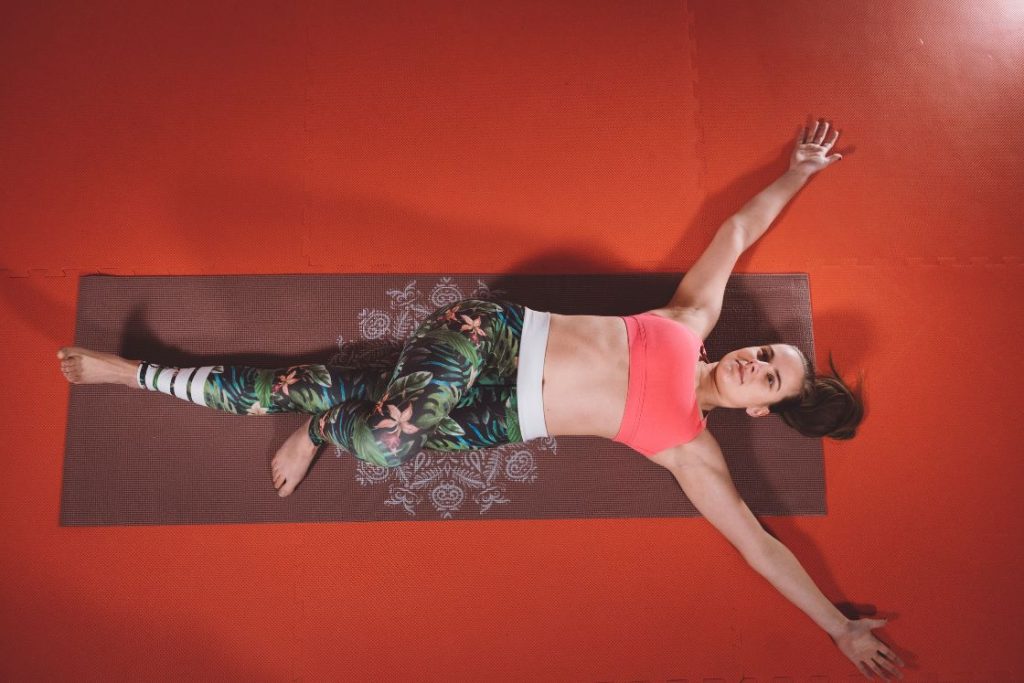
Supine yoga poses are yoga postures where the practitioner lies on their back with the face up. One of the most common poses in this category is Shavasana (corpse pose). In supine poses, the spine is in a neutral position, and the weight of the body is distributed evenly across the back.
Most Sanskrit names for supine yoga poses start with “Supta” which means reclined or supine position. They are also called “Lying on the Back asanas”, or “Reclining Postures”. For example, Supta Baddha Konasana (Reclined Bound Angle Pose), Supta Virasana (Reclining Hero Pose), and Supta Matsyendrasana (Reclined Spinal Twist Pose) are all examples of yoga poses that involve a supine position.
Supine yoga poses are an excellent way to finish your yoga practice by lying down on your back. These poses are among the most effective positions for waking up or falling asleep in bed. They’re also popular in restorative yoga.
Supine Poses in Yoga
Here we have listed 27 supine asanas of yoga. Each pose is accompanied by an image and name making it easy for you to choose the right pose for your practice.
Click on any pose to access detailed instructions, benefits, modifications, and Sanskrit pronunciation. Our detailed guide ensures that you can safely and effectively incorporate supine poses into your yoga practice.
Benefits of supine yoga poses
Supine yoga poses offer numerous benefits, such as alleviating lower back pain and swelling, improving circulation, and increasing flexibility in the hips and spine. They also aid in strengthening the neck muscles, opening the chest, and improving the respiratory and digestive systems.
Restorative supine poses provide a therapeutic effect, assist in healing the body, and are excellent for calming the mind and body. Each time we return to our backs after a supine routine, we have a moment for assimilation, mindfulness, and relaxation.
Below described are some of the major benefits of supine yoga poses:
- Relieves tension and pain in the lower back – By lying on your back and engaging in gentle stretching movements, supine yoga poses can help relieve tension and pain in the lower back.
- Relieves stiffness – Supine poses can help you relax and relieve stiffness in your neck, shoulders, and back.
- Improves respiratory system – Lying on your back helps in opening your heart center and chest, paving the way for improving the respiratory system.
- Improves digestion and metabolism – Supine yoga poses can stimulate the digestive system and improve metabolism, leading to better digestion and absorption of nutrients.
- Reduces stress and anxiety – The relaxed position of supine yoga poses and the deep breathing involved can help calm the mind and reduce stress and anxiety.
- Increases flexibility and range of motion – Practicing supine yoga poses can improve flexibility and range of motion in the hips, spine, and other areas of the body.
- Promotes relaxation and better sleep – Supine yoga poses can help promote relaxation and better sleep by releasing tension in the body and calming the mind.
Tips for practising supine yoga poses
- Use a folded blanket or bolster under your shoulders, hips, knees, or lower back for more cushioning and support.
- A rolled towel or blanket can help take off the strain from the neck.
- A stack of yoga blocks under the sacrum will help in taking off the pressure from the lower spine as well as the thighs.
- Pregnant women should use props such as bolsters or folded blankets under their lower back and buttocks for extra support.
- If you suffer from high blood pressure, vertigo, or some neurological ailment, it is better to proceed with caution.
- Make sure you are not putting too much pressure on the spine in inversions or balancing supine poses.
- If you experience any discomfort while performing these exercises, stop immediately. Instead, use props to adjust or support the pose, or simply avoid it.
- While holding these positions, particularly the more restorative and relaxing asanas, take slow, deep breaths.
Conclusion
Supine poses are customizable, soothing poses that aid in stress relief, increased flexibility, and improve digestion. It’s an excellent pose for doing leg stretches and allowing gravity to do the duty in the reclining twists that frequently conclude the class.
Supine yoga poses can be utilized to strengthen both the back and front of the body. Some supine poses may be done against a wall, which is especially useful if you are fatigued or have limited flexibility.
Anyone can do supine poses, and they’re especially good for people who have trouble standing for long durations. This means that these poses are adaptable, relaxing, and relevant to everyone.
Supine poses can typically be held for longer periods of time than other kinds of asanas since the majority of your body weight is carried by the earth or you are positioned with a low centre of gravity. They are held for much longer periods of time in restorative yoga.
